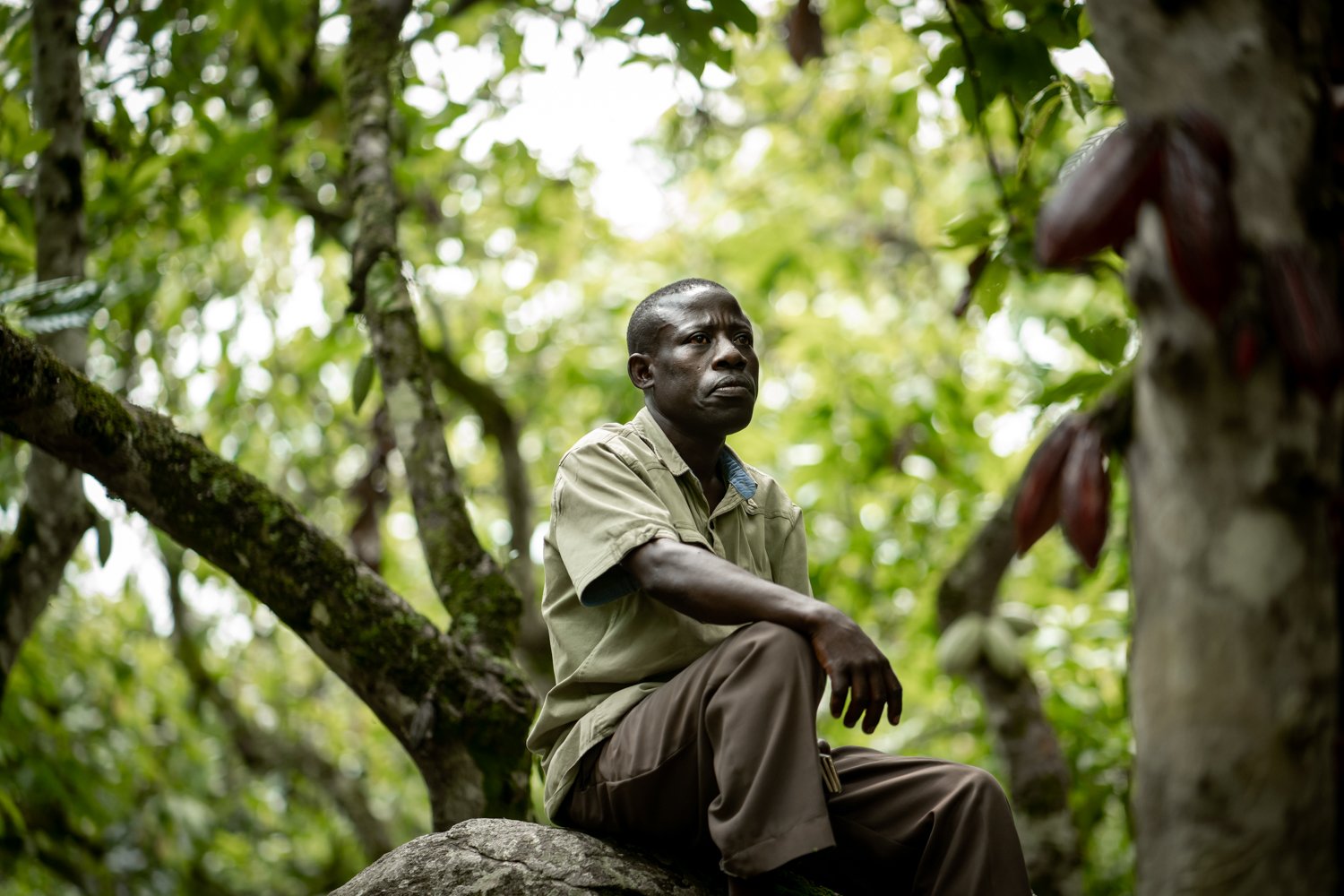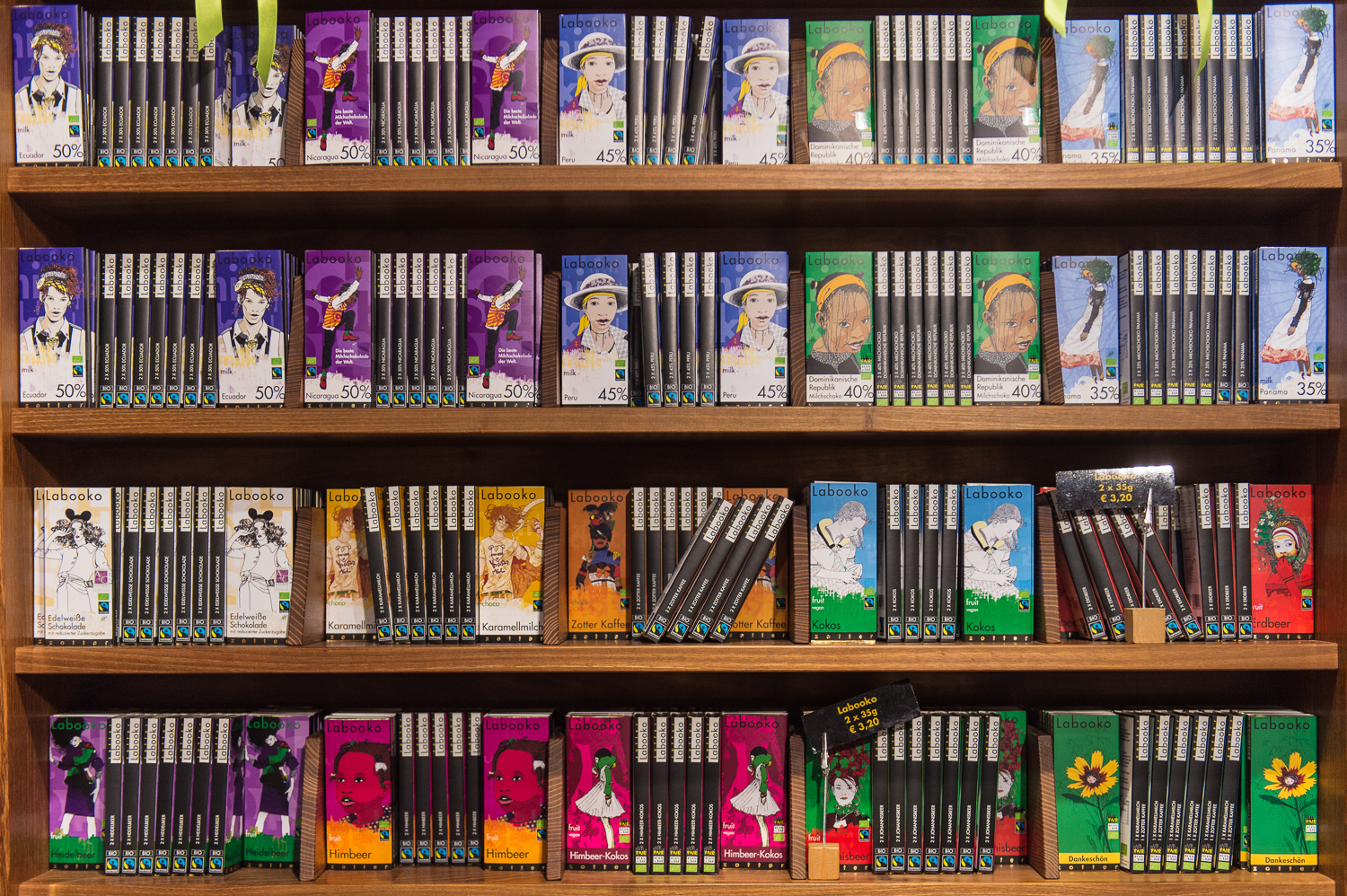All the years farmers wait for their trees to mature, the labour to maintain and harvest at just the right time, breaking the pods open one by one, carrying cacao for hours to a buying point, the careful fermentation process, the rugged kilometres it's driven from there, then the thousands more it rocks back and forth on an ocean freighter, all before it even arrives at the doors of a chocolate factory where a lineup of incredibly sophisticated machines slowly breaks the cacao down and massages it into chocolate.
That's when we come along, at the checkout somewhere, jamming a hand into our pockets and slamming a couple bucks on the counter to purchase the anticlimactic summarization of all of this incredible globalised labour.
Chocolate is wildly underpriced, and in almost every case, it's at the expense of the farmer. The mere fact that it takes industry disruptors like Kokoa Kamili or Latitude Trade to come into a market swinging, paying well over double what the going rate is for cacao, just for farmers to be able to afford to send all their kids to high-school is a great example of this. Farmers are getting older, in areas that grow cacao for mass produced chocolate, it's simply not a very desirable crop, younger generations are finding other careers and cacao farmers are in their fifties in places where life expectancies sit around 60.
This industry is broken, and there is a surprisingly short answer when I asked Julia Zotter (from Zotter Chocolate) how chocolate makers can make it better: pay farmers more. Or, for a consumer like you and me, buy chocolate from someone paying farmers more.
Over the past year, I've had the pleasure of doing some work for Zotter, the Austrian Bean to Bar chocolate makers. Documenting their cooperatives in Peru, then following the cacao beans to their factory outside of Graz. Coming from small-town Canada, where my taste of chocolate was limited to whatever Dairy Milk bars were stocked in the convenience store, spending time with Julia Zotter has opened my eyes not just to the world of agriculture and chocolate making, but to the incredible potential of what chocolate is.
The world of wine has many parallels to chocolate, however, when buying a wine you make your choice based on the type of grape, the country and region it's from, and often the specific farm or estate it's been grown on, as well as the year it was produced. Unfortunately, unlike wine, chocolate is often an enormous mix of everything, companies like Hershey's or Mars will create a base chocolate from a mix of suppliers - so imagine for a moment that the wine you bought was just a massive blend of wine from thousands of farms, spread across dozens of countries, each year the flavour would hardly change, and the only way to make it unique would be to mix other flavours into it.
Cacao, like grapes, have a several different varieties with differing tastes (think Pinot vs Chardonnay), and are subject to climate in the same way (A French Chardonnay vs an Australian Chardonnay), even the specific estate conditions, vine age, and fermentation conditions (this is why wine tasting in wine regions feature so many different flavours of the same grape), and of course the year (perhaps 2014 was much sunnier in Bordeaux than 2015).
I remember sitting in cooperative collection centres across Peru tasting farm after farm of 100% cacao mass, each with completely different profiles. Unfortunately, all that uniqueness, those beautiful flavours, they are just lost in the blend of thousands that coat your Ferrero Rocher.
Zotter is set on elevating our relationship to chocolate, with their Labooko range you can sample your way through hundreds of different bars, each featuring specific regions, bean, or blend. Last week I pulled out two bars of chocolate, both 72%, both from Peru, but different genetics, and the flavours where night and day. Many craft chocolate makers around the world are moving in the direction, such as Canada's Hummingbird Chocolate which is just down the road from the Hershey's factory was in Peru the same time we were, exploring different regions and flavours.
It has been exciting (and delicious) discovering these new depths, and as the number of craft chocolate makers grow, it won't be long before you'll find yourself debating some connoisseur about whether 2020 was a better year than 2022 for Peruvian, Piuran, Chuncho beans.
























